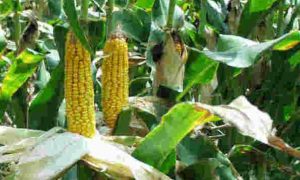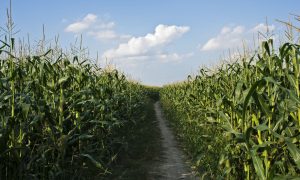Seeds of solace

For years, Kamli Pharin of Bara Kachna village in Jharkhand and her family rarely had enough to eat. “We would buy seeds from moneylenders, who would then take two-thirds of our harvest. To pay off the remaining debt, we would sell the rest, along with seeds,” says Pharin, who grows pearl millet, cowpea, pigeon pea and maize on her 8-hectare (ha) land. The situation was no different for several other households across this tribal village in Littipara block of Pakur district. But now, she says, “We eat half of our produce and sell the rest.”
Pharin’s life changed in mid-2019, when four community-led seed banks were set up in the hilly districts of Pakur and Godda. Residents in these districts belong to the Pahariya community and practise jhum or shifting cultivation that involves clearing land by burning vegetation for farming for a few years. “We grow native varieties of maize, millets and pulses that have good productivity and are more resistent to pests and diseases,” says Salomi Malto of Chhota Suruj Bera village in Littipara block.
Some of these varieties such as GS-4 cowpea, native sorghum and finger millet are rare and vanishing in agriculture, says Pawan Kumar, a social worker with Traidcraft Exchange, a Ranchi-based non-profit that creates sustainable solutions to poverty. “But rather than conserving these varieties, the community was forced to sell them and buy seeds of inferior quality from traders. They had to provide up to three times the seeds in return. Even in cash deals, traders charged high interest rates. This puts residents in debt,” he says.
In 2019, Traidcraft Exchange joined hands with two other non-profits that work with tribal communities, Badlao Foundation and Sathee, to help the villages set up the four seed banks. Currently, the banks cater to more than 1,350 households in 90 villages. They are operated under four panchayats: Bara Paktari, Bara Sindari, Kunjbona and Karma Tarn, and are managed by women-led committees. Pharin and Malto are members of the Kanchangarh Samudayik Seed Bank operated by the Karma Tarn panchayat.
To register with the seed banks, members must deposit 2.5 kg of indigenous seeds. Seeds are also provided through state government programmes. During sowing season, the committees decide distribution on a case-by-case basis. So far, they have distributed 3,679 kg of seeds. Members currently provide 0.5 kg of seeds after every harvest to replenish the stocks.
To improve yields, the non-profits also train farmers on natural and organic methods, says Thomas Pahariya, Littipara block coordinator for Badlao Foundation. These efforts have boded well. Pharin’s harvest has increased from 30-40 kg earlier to more than 50 kg now. For Malto: “Harvests from my 12-ha Iand rose by three times since I started using native seeds from the bank instead of those from traders.”
With immediate demands fulfilled, the residents are now focusing on improving crop yield and becoming self-sufficient in food.
Source Link: https://www.downtoearth.org.in/news/agriculture/seeds-of-solace-82393















